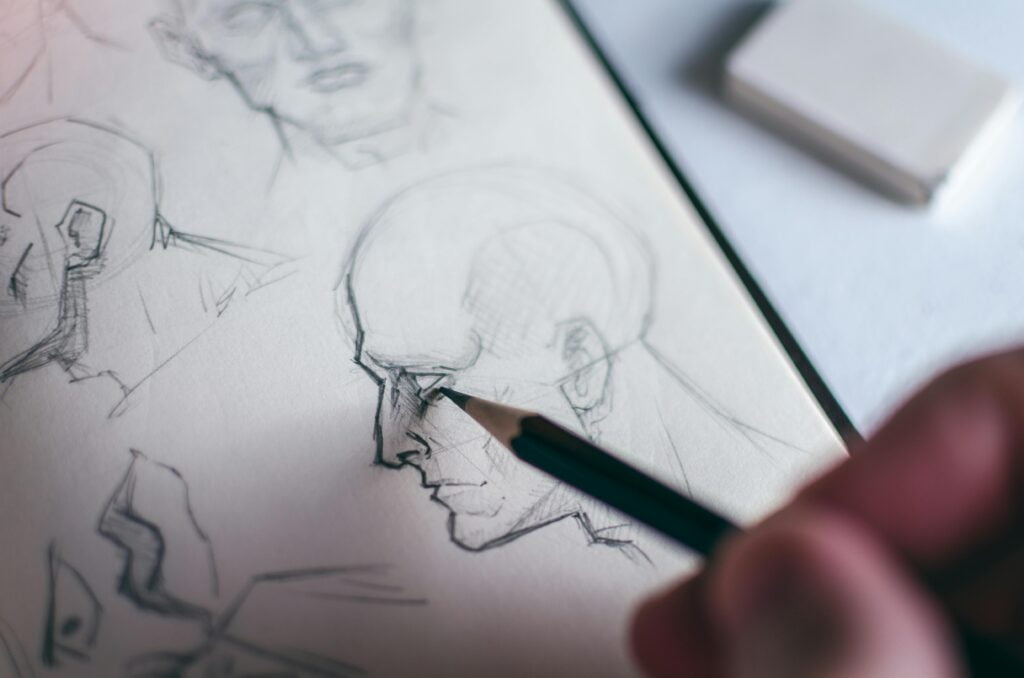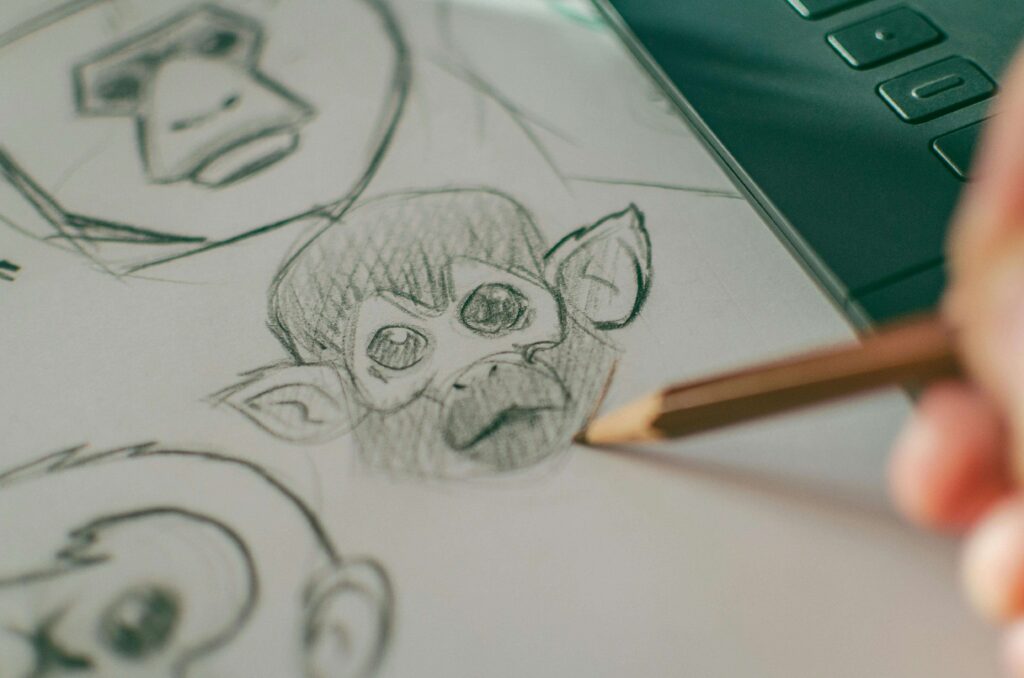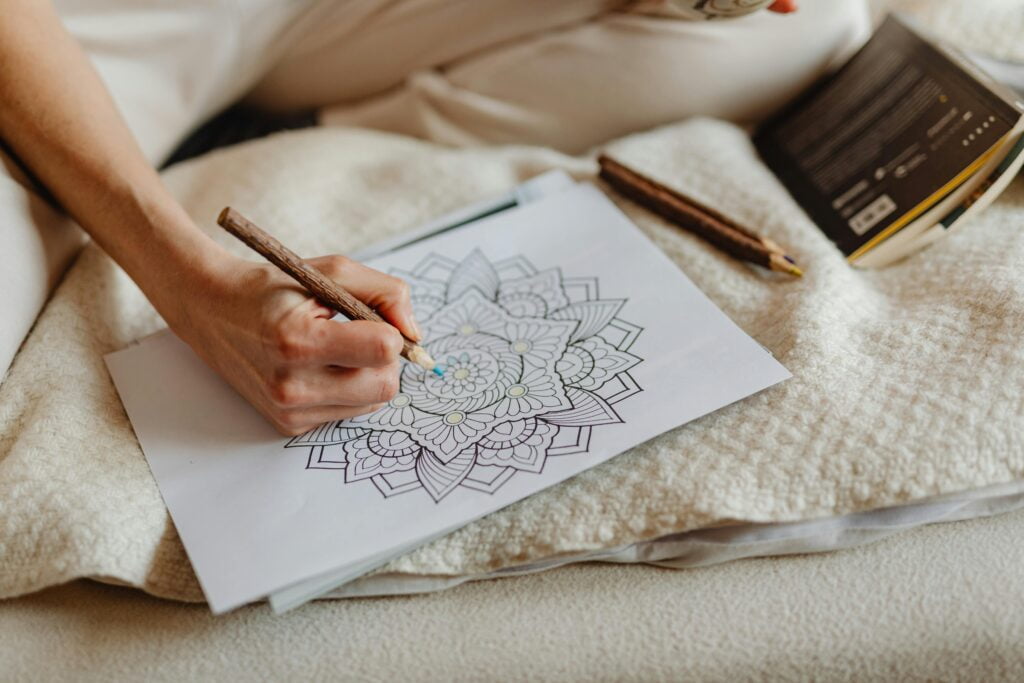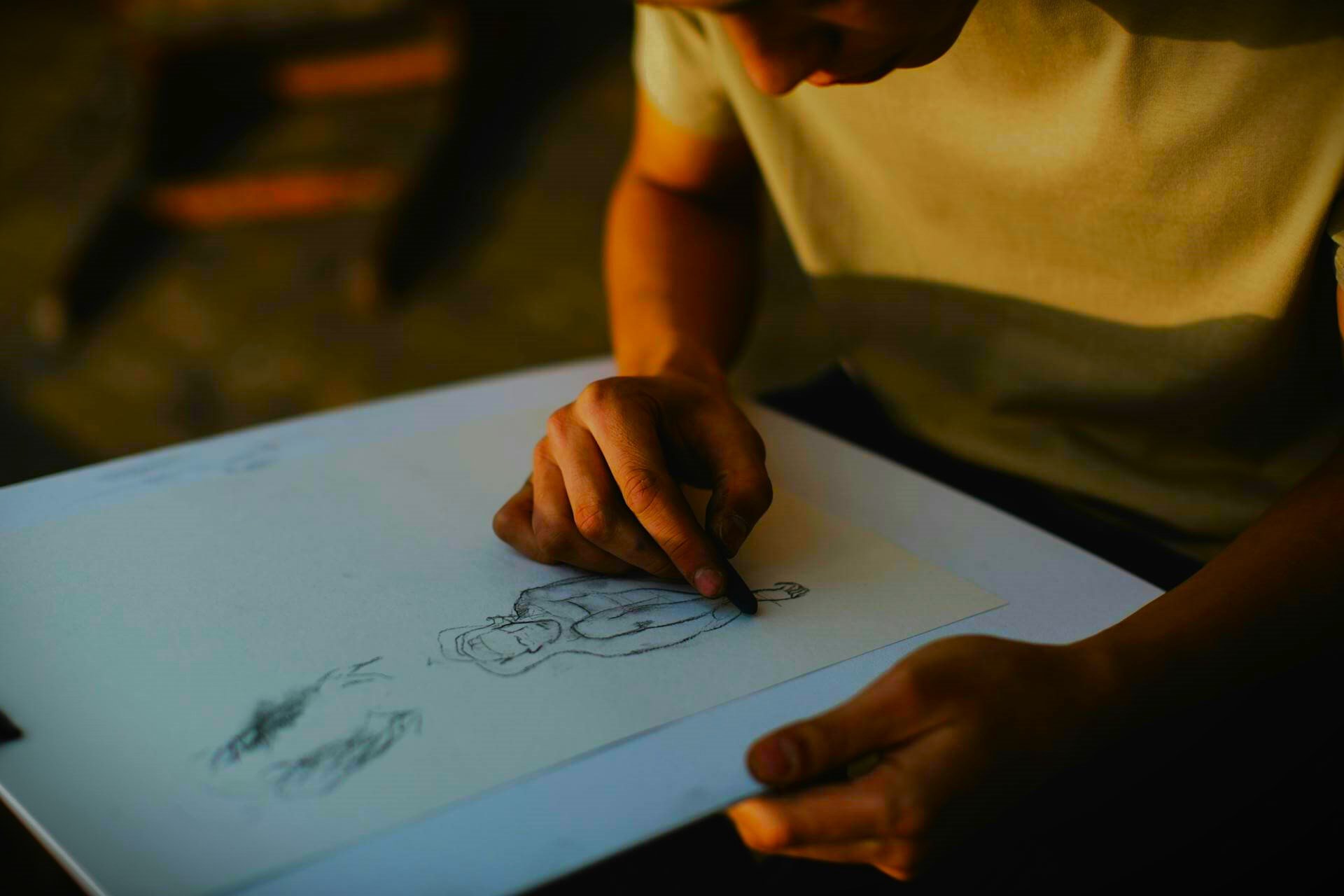Introduction
Sketching, often perceived as a simple art form, is a gateway to capturing the essence of ideas, emotions, and scenes. This medium, which primarily utilizes lines and shading, serves as a powerful tool for artists to explore their creativity and refine their skills. In this blog post, we delve into the rich history of sketching, discuss various techniques, explore the benefits it offers, and provide tips for both beginners and advanced artists to enhance their craft.

The Historical Canvas of Sketching
Sketching has been an integral part of human expression since ancient times. The earliest sketches, found in prehistoric caves, depicted animals and human figures, serving as a record of daily life and storytelling. Fast forward to the Renaissance, and sketching became a crucial tool for artists like Leonardo da Vinci and Michelangelo. These masters used sketches not only to study the world around them but also as preparatory steps for larger works. Leonardo’s detailed anatomical sketches, for instance, reflect his deep curiosity and desire to understand the complexities of the human body and nature.
By the 19th century, sketching had become more accessible, thanks to the invention of portable sketchbooks and pencils. Artists could now capture scenes and ideas on the go, leading to a proliferation of spontaneous and vibrant sketches. This period marked a significant shift as sketching became recognized not just as a preparatory activity, but as a valid art form in its own right.
The Techniques of Sketching
At its core, sketching involves the creation of images using lines and shading to represent forms and textures. One of the fundamental techniques is contour drawing, which focuses on the outline of a subject, capturing its essential shape and details. This technique helps artists develop a keen eye for proportions and angles.
Another essential technique is hatching and cross-hatching, which involves using parallel and intersecting lines to create shadows and textures. This method is particularly effective for adding depth and dimension to a sketch. Gesture drawing, on the other hand, is all about capturing the movement and flow of a subject with quick, expressive lines. It’s an excellent way to practice conveying energy and emotion in a sketch.
For more advanced sketching, techniques like blending and stippling come into play. Blending involves smoothing the transitions between different shades to create a more realistic effect, while stippling uses dots to add texture and detail. Another sophisticated technique is negative space drawing, which focuses on the spaces around and between objects, helping to define their shape and form more clearly.

The Benefits of Sketching
Sketching offers a multitude of benefits, both for artistic development and personal well-being. From an artistic perspective, sketching is a powerful tool for improving observation skills. By paying close attention to details, artists learn to see the world with a heightened awareness, which translates into more accurate and compelling drawings. Additionally, regular sketching practice helps develop fine motor skills and precision, which are essential for any form of visual art.
Beyond the artistic benefits, sketching also fosters creativity by encouraging exploration and experimentation with different styles and techniques. On a personal level, sketching can be incredibly therapeutic. The concentration required can lead to a meditative state, reducing stress and promoting relaxation. Furthermore, sketching can enhance memory and cognitive function by helping individuals recall scenes and details more vividly. Completing a sketch also boosts confidence, as it provides a tangible sense of accomplishment and artistic growth.
Tools of the Trade
The tools required for sketching are both varied and accessible, ranging from traditional to modern digital mediums. Traditional sketching tools include pencils, which come in a range of hardness levels from 9H (very hard) to 9B (very soft). Each type of pencil offers different effects, with harder pencils producing lighter lines and softer pencils creating darker, more expressive marks. Paper also plays a crucial role, with options ranging from smooth sketch pads to textured newsprint and specialty drawing paper.
Erasers are another essential tool, available in different types such as kneaded, vinyl, and gum erasers. These are used not only to correct mistakes but also to refine and add highlights to a sketch. In the digital age, sketching has expanded to include tools like graphic tablets and software. Devices such as Wacom tablets or iPads paired with stylus pens offer a digital canvas for sketching, while programs like Adobe Photoshop, Procreate, and SketchBook provide a wide range of brushes and tools to enhance digital sketches.

Getting Started: Tips for Beginners
For those new to sketching, the journey can seem daunting, but it is filled with opportunities for growth and creativity. One of the best ways to start is by keeping it simple. Begin with basic shapes and forms, gradually working up to more complex subjects as your confidence grows. It’s also important to practice regularly. Setting aside even a small amount of time each day for sketching can lead to significant improvement over time.
Using references is a great way to understand proportions and details better. Whether drawing from life or photos, references provide a concrete guide that helps in capturing the essence of the subject. Experimentation is key in sketching, so don’t be afraid to try different techniques and tools to find what works best for you. Finally, seeking feedback from others can be incredibly valuable. Constructive criticism helps identify areas for improvement and encourages artistic growth.
Advanced Tips for Seasoned Sketchers
For those who have already mastered the basics of sketching, pushing the boundaries of your practice can lead to new levels of artistry. One way to advance your skills is by experimenting with different mediums and techniques, such as combining traditional and digital methods to create unique effects. You can also challenge yourself by sketching from more complex perspectives or under varying lighting conditions to enhance your understanding of depth and shadow.
Another advanced tip is to focus on storytelling through your sketches. Try to convey a narrative or emotion with each drawing, which adds a layer of depth and meaning to your work. Finally, continue to seek out feedback and stay inspired by exploring the work of other artists. This not only helps in refining your skills but also keeps you motivated and excited about your sketching journey.
Conclusion

Sketching is a versatile and rewarding art form that offers endless possibilities for creativity and self-expression. Whether you are a beginner just starting out or a seasoned artist looking to refine your craft, the act of sketching provides a unique way to capture the world around you and express your inner vision. So, pick up your pencil, embrace the joy of sketching, and let your lines bring your ideas to life.





